Science is one of the most intriguing subjects to learn in school. It’s so varied and it can be a lot of fun for kids – especially when it comes to conducting science experiments.
However, science experiments do not always have to be about beakers and bunsen burners. There are several ways that students can conduct easy science experiments, and it does not require a lot of resources or money to do so.

But what exactly are the options?
Well, if you are a teacher or a parent looking for easy science experiments for students, then we’ve got you covered. Our comprehensive list below shows you plenty of options that they can take part in.
So, if you’re ready to find out a lot more – then read on for lots of ideas!
Easy Science Experiments For Students!
Without any further delays, let’s dive right into this list of some easy science experiments for students. We’re sure that your young minds will love some of these!
1. Dancing Pepper
Perhaps one of the most intriguing and fun experiments is the dancing pepper experiment. It shows kids how substances behave differently when placed on water in an effort to show how molecular behavior can differ with surface tension.
This can result in some things appearing to dance, so it’s a pretty fun experiment to observe!
2. Colored Celery
This is a pretty basic experiment but it can help to show kids how plants absorb water. You just need either celery or a white flower and some colored water. Once the celery is placed in the colored water, it can help kids to visualize how plants sustain themselves.
3. Dissolve Or Not?
This experiment can help teach kids about different solutions, but it’s more about showing kids the way to create their own hypotheses. For example, having six different substances and six different solutions, questioning whether it will dissolve and why they think so.
4. Volcano (Baking Soda)
Every kid will have fond memories of this experiment. It’s a super fun and easy science experiment that shows how bases and acids react when they are in contact with one another, and it results in a miniature volcano!
5. The Skittles Experiment
This is a cool way to learn about diffusion. You simply need a packet of Skittles and observe what happens when each different color coating is exposed to shallow, cold or hot water.
6. Burn The Bill
Don’t panic, you won’t be burning any money with this experiment. It’s an easy way to teach kids about combustion, so you can use any paper item.
7. Dr. Seuss’ Butter Experiment
Any fans of Dr. Seuss may recognize this experiment. You simply need to put heavy whipping cream into a tight jar and observe how the fat molecules clump together and form a butter product!
8. Liquids And Layers
Using items that you can find in your pantry, this experiment can help to show kids how liquids have different densities and how they might operate.
9. Egg Crystal Geode
Merging Springtime and Geology together, this is a fun experiment whereby kids can make their own geodes and learn about super-saturated solutions.
10. Make Rain In A Jar
This quick and simple experiment can help to show students how rain occurs. As we know, rain is the result of warm, humid air converging with cold air in the upper atmosphere.
So, using a jar and a plate, you can place ice and water into a jar and show kids how rain works by making your own in a jar!
11. The Unpoppable Balloon
Students will be intrigued by how you can put a sharp stick through a balloon and it won’t pop! It’s a quick and simple experiment that demonstrates polymers.
12. Float Or Sink?
This experiment is pretty basic but it’s quite important to learn. It can be conducted anywhere too, but it’s best during hot weather using a lake or river.
Create a hypothesis with multiple items and question whether or not you believe certain items will sink or float.
13. Make Your Own Sand
Any kid will get a kick out of making their own sand! The experiment doesn’t need too many resources or items, but it’s something you need to ensure before you start.
14. Make Your Own Barometer
This experiment can help show kids how air pressure has an effect on the weather. The best way to do this is to build your own barometer!
15. Create A Solar Oven
This is a quick and easy way to show students how radiant heat works. By harnessing its power, there are many things you can do! You just have to be careful.
16. The Sticky Ice Experiment
It’s really fun to show students how salt has an effect on water and its freezing point. You need water, salt, and some string to carry this one out!
17. An Egg In A Bottle
Using a small bottle, some matches, and an egg, you can show your students how objects may react to adaptations in air pressure.
18. Make A CD Garden
You’re certain to have some old CD cases around. If so, you can get kids involved in making their own CD case garden and observe the ways that plants grow!
19. The Gummy Worm Dance
When an acidic liquid is mixed with a neutral solution, it’s possible for some things to react in hilarious ways that kids will love. Place a gummy worm in a jar and mix the solutions to watch your students laugh at the results.
20. Make A Green Penny
If you have an old penny lying around, then why not test out this experiment, which takes about three days? It’s a cool way to learn about metal and chemical reactions, though!
21. Soap Popcorn
This experiment needs supervision from an adult, but it’s awesome to watch. Using Charles’ law, simply place a bar of soap in a microwave and watch how it expands as it heats up.
22. The Cabbage PH Indicator
Students can test out the PH levels of different liquids simply by using cabbage. It’s pretty simple to perform and it’s cool to watch.
23. Can Ice Grow?
This experiment needs to be followed step by step, but it’s really interesting to observe. With some basic steps, you can get your students to observe how ice might grow and form towers.
24. Paper Cup – The Strength In Numbers
Using several paper cups and some cardboard sheets, this is an outdoor experiment that can help to demonstrate weight distribution and how paper cups can hold body weight when in numbers.
25. Separate Pepper And Salt
Draw from the power of static electricity via a plastic spoon and show students how easy it is for matter to divide and separate – which can be shown with salt and pepper.
26. Fireworks In A Jar
At the right time of year, you can theme this experiment using oil, water, food coloring, and a jar. It’s a super fun project to help kids understand density – and the results are pretty!
27. Water And Oil Discovery Bottles
Most of us will be familiar with making water and oil discovery bottles from when we were kids, and it continues to be a super fun experiment for students today. All the bright colors are an awesome sensory experience for kids.
28. Color Mixing With Coffee Filters
This experiment is more for younger students, but it’s simple and effective. Using coffee filters, you can add liquids to watch how the filters absorb them and change colors, making mixes which make new colors.
29. Create Fizzy Lemonade
A tasty experiment for the summer, this can help teach kids how mixing base liquids with acid creates a chemical reaction – but it results in something that you can enjoy at the end!
30. Magic Milk
This simple experiment needs a few items; milk, dish soap, and food coloring. This is a super colorful and fun thing to do and can help show kids how molecular behavior might work, how surface tension works, and a little bit about an object’s density.
31. Walking On Eggs
Another experiment that can show the power of weight distribution is walking on eggs. Show your students how something so fragile can withstand body weight when in large numbers.
32. Create A Hydraulic Elevator
This experiment sounds more complex than it actually is. You just need to use some sticks and large medicine droppers. It’s a classic experiment that many STEM teachers have used in the classroom before.
33. Demonstrate Inertia
Newton’s first law of motion can be demonstrated pretty easily, and it’s never too early or too late to show students how it works!
34. Grow Your Gummy Bears
When it comes to students and science, what better way to teach them than using candy? Using all areas of the major sciences, you can turn little gummy bears into big gummy bears!
35. The Disappearing Egg Shell
Students of all ages enjoy watching this experiment, and it’s helpful to show them the ways that chemical reactions operate.
36. Coca-Cola Tooth Experiment
This is a classic experiment that can help show students the effects of sugary drinks on their teeth. When your students are young and losing their baby teeth, ask them to bring in a tooth and show them the horrible effects in a jar!
37. Small Tornado In A Bottle
Most of us performed this experiment when we were students, and it’s super fun to keep it going with your own students. Demonstrating centripetal force by creating a water vortex in a bottle is awesome!
38. Make A Bag Leak-Proof
Another experiment that demonstrates polymers, you need a plastic bag, some water, a sharp pencil, and some patience – and you can show kids the seemingly impossible!
39. Make A Non-Newtonian Fluid
There are substances out there that get firmer when pressure is applied to them, and these are known as non-Newtonian fluids. It’s really intriguing to see how fluids can behave in such ways, so your students are bound to get a kick out of this.
40. Demonstrate Capillaries
You can show kids how our capillaries function using items you can find pretty much everywhere. It’s super cool and colorful and you’re bound to excite everyone with this in the classroom.
41. Make Candy Rock
Students, candy, and rocks – they go hand in hand! Your students will love to create their own candy rock and watch as the rock crystals grow.
42. Make The Super Bubble
You can show students how to make a better version of bubble mixture to create much larger bubbles, called superbubbles!
43. Frozen Vegetable Oil Paintings
Here’s another classic experiment that most kids have conducted when they were in the classroom. It’s a fun way to show kids how some liquids behave when they are frozen, and as vegetable oil behaves differently – you can make awesome paintings!
44. Make An Ice Magnifying Glass
This experiment is pretty simple, but we like to add something more fun to it. Once you have made your ice magnifying glass, show your students how glass behaves underwater by designing a real magnifying glass (do not allow them to do this though).
Glass under water can be cut and sliced in much different ways than above the surface, so you can easily create your own glass designs to show your students in a safe way.
45. Can Eggs Float?
Finally, on our list, we have the experiment that has shown students for years how eggs can float on water if salt is added to the liquid. It’s a simple way to explain density, and it’s always a good idea to bring in the Dead Sea example.
The Dead Sea is so salty that people can simply float on its surface, but it’s also deadly because if you turn around – it’s difficult to get your head out of the salty water!
Things To Remember
There are always things you should remember when it comes to these sorts of experiments. Some are much more obvious than others, but it’s always important to ensure we’re on the same wavelength. These include the following.
Safety
Conduct a health and safety risk assessment before you carry out any experiment, and always be aware of any safety equipment you and your students may need to wear. Be sure to take reasonable care with all of your experiments (and best to do a trial run first!).
Reinforce Learning
It’s all fine and good demonstrating the experiments, but you must ensure that you reinforce the student’s learning by asking questions at the end of the lesson. It’s also wise to set some theoretical homework based on their practical experiment.
Do Your Research
It’s of course critical that you know exactly what you are doing before you show your students, but it’s also as important to know your students. For example, if an experiment is more tailored for younger students, do not try it for older kids.
You may also like: 1st grade science project ideas.
The Bottom Line
And that’s our comprehensive list of the easiest science experiments that you can show students in the classroom, at home, or out in the field!
We hope you have enjoyed our guide and you’ve found some amazing new experiments for your students! Good luck.
Top tip: Teach your students about the most famous inventors while they work on their own science experiments.
- Homeschooling In High School: Pros And Cons - February 24, 2024
- How Do I Withdraw My Child From School To Homeschool? - February 23, 2024
- How To Not Go Crazy Homeschooling Kids: A Guide For Frazzled Parents - February 22, 2024
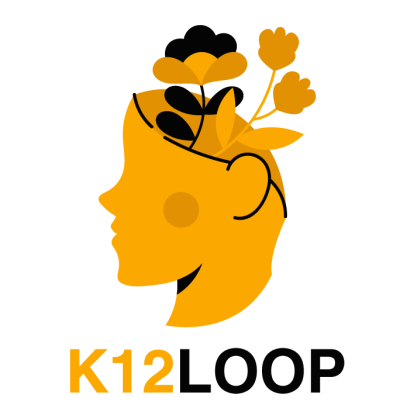

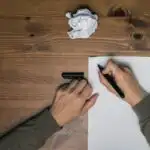
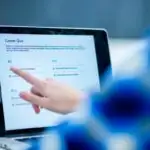


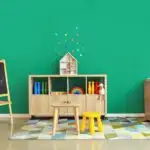

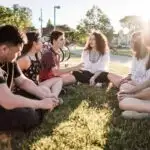
Leave a comment